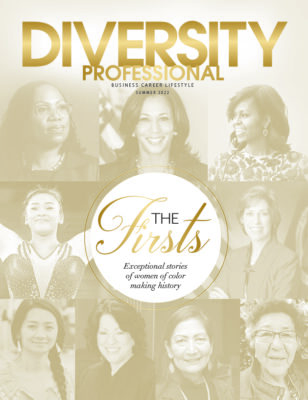The Disability Community: Is It Represented In DEI & Supplier Diversity?
Disability intersections are overlooked, proving a barrier to progress.
ABATOR’S CFO MARIAN NEILSON AND CEO JOANNE PETERSON»
In this past year of the global pandemic, social justice and political turmoil, three anniversaries significant to the disability community were mostly overlooked: the 75th observance of National Disability Employment Awareness Month (NDEAM) in October, the 30th anniversary of the passage of the Americans with Disabilities Act (ADA) in July and the 10th anniversary of the United States Business Leadership Network’s (USBLN) Supplier Diversity Program, and the Disability-Owned Business Enterprise (DOBE) certification.
For almost any other diverse group, this would have been a banner year, with national publicity, speakers and major social media coverage, and yet, not much has been said. “Granted it’s not been around as long as other certifications, but it is a milestone nonetheless,” says Joanne Peterson, owner and president/CEO of DOBE-certified company Abator, based in Pittsburgh, Pennsylvania. Peterson and her daughter Marian Neilson, who serves as chief financial officer, were members of the Disability:IN host committee in 2019 and 2020. Disability:IN is the third-party certification body for disability-owned companies.
The mother-daughter team have also launched a company, Abator’s 360° Access, to educate businesses and consumers, capture and share standardized accessibility information and help revolutionize how members of the disability community find restaurants, lodging or buy goods, services and products. Peterson, when asked what disabilities qualified for certification or as a disability in the workplace, describes how difficult it is for those with nonvisible disabilities—Her disability is obvious as she uses assistance to walk and breathe.
Forbes diversity and inclusion contributor (with lifelong disabilities) Andrew Pulrang, in his article “4 Ways to Understand the Diversity of the Disability Community”, writes, “How can companies, community organizations and individuals really know how to treat disabled people in everyday life properly when the disability community itself contains so many different perspectives and opinions? How do disabled people explain ourselves and what ‘we’ want when we so rarely agree with each other?”
“How can companies, community organizations and individuals really know how to treat disabled people in everyday life properly when the disability community itself contains so many different perspectives and opinions?
Pulrang’s article explores types of disability in terms of broad categories like physical, cognitive, sensory, mental health and learning disabilities and then specific diagnoses like spinal cord injury, Down syndrome, traumatic brain injury, blindness and deafness—the list goes on. There are obvious ableist stereotypes for various disabilities but what most of us aren’t aware of is the ‘hierarchy of disability’— the habit of people with one type of disability trying to boost their own legitimacy by claiming some kind of higher status or greater degree of stigma and hardship.
In an article titled “Are you overlooking disability in your diversity and inclusion plan?”, authors Kelly Hermann, vice president of accessibility, equity and inclusion, and Saray Lopez and Tondra Richardson, directors of student diversity and inclusion, at University of Phoenix (UOPX) address adding disability as an attribute to and embedding it in an organization’s DEI goals and intentions, and also examining any overlooked disability intersections that prove barriers to progress. They recommend using ‘culturally sensitive language’ when discussing employees and customers with disabilities to make them feel that they are supported.
Nondisabled people already have a difficult time with the disabled. Physically disabled people are often seen as lazy or excessively brave. People with mental illness are feared. Autism is viewed as an epidemic and those with intellectual disabilities are often ridiculed. This may be why we don’t see abled people ‘standing’ with their disabled colleagues, neighbors and family members other than in a medical sense. They will raise money for a set of impairments to be treated with the goal to come as close as possible to ‘normal’ functioning but eschew social responsibility. Pulrang calls these the Medical Model and the Social Model, the medical being the older, more comfortable approach.
So, the answer to the question ‘is the disability community represented in DEI and supplier diversity’ is both a yes and no. Historically, the government has worked on expanding employment opportunities for people with disabilities since the George H.W. Bush-era President’s Committee on Employment of People with Disabilities. Every year since, there has been a presidential proclamation supporting this work ensuring that the Department of Labor continues to collaborate to expand and increase employment opportunities for Americans with disabilities.
Out of the original committee grew Disability:IN, which “empowers business to achieve disability inclusion and equality”, as a third-party certifier for companies owned, operated and controlled by a disabled person. Disability:IN’s 10-year-old certification program is still relatively small with approximately 200 certified businesses, but it is mighty. According to Peterson, the organization focused on the individual first with the inclusion of employees, then pulled together an impressive list of corporate champions. The companies who support the organization are known to have launched some of the strongest disabled DEI efforts in the nation with disability Employee Resource Groups and technological advances in workplace ergonomics. That’s the ‘yes’.
The ‘no’ is the social justice or the Social Model. The disability community follows and supports the organizations that represent their various intersections but don’t speak out/speak up for themselves as a group. Every diverse group is splintered, even when they agree on basis for the group and the disability community is no different. However, they’ve not been able to come to a consensus. Without unity within a group, it’s difficult for those outside the group to advocate and assist. Persons with disabilities deserve to be recognized and the layers of stigma and discrimination be opened for discussion.
To the disability community: it seems time to take the answer to a resounding yes. Take your rightful place within the diversity community in both DEI and supplier inclusion and celebrate you and 75 years of recognition.









